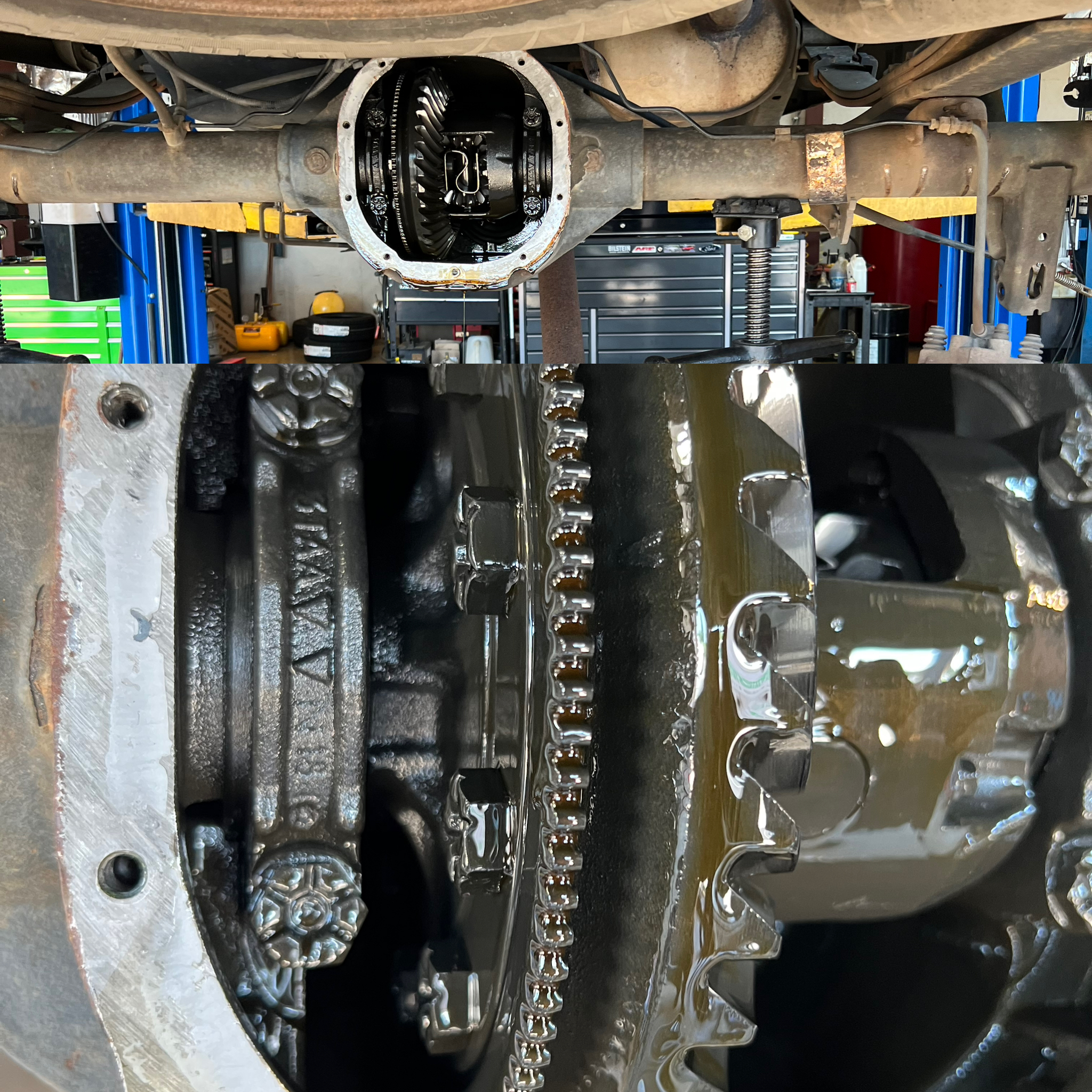How the Rear Differential Works
The rear differential in a car is a crucial component of the drivetrain, responsible for transmitting power from the engine to the rear wheels while allowing them to rotate at different speeds when turning corners. Let's explore how the rear differential works:
The rear differential is typically located between the rear wheels and is housed within the rear axle assembly. Its primary function is to transfer power from the driveshaft (which comes directly from the transmission) to the rear wheels while allowing them to rotate at different speeds, particularly when turning corners.
Inside the rear differential housing is a complex arrangement of gears known as the differential gear assembly. This assembly consists of several gears, including the ring, pinion, spider, and side gears. The ring gear is attached to the differential case and is turned by the driveshaft. The pinion gear is connected to the driveshaft and meshes with the ring gear. When the pinion gear turns, it rotates the ring gear, transferring power to the rear wheels. The spider gears are located at the center of the differential assembly and are connected to the side gears. The side gears are attached to the axles. When turning corners, these gears allow the rear wheels to rotate at different speeds.
When the vehicle travels in a straight line, the ring gear and pinion gear rotate together, causing both rear wheels to turn at the same speed. However, when the vehicle turns a corner, the outside wheel needs to travel a greater distance than the inside wheel. This is where the differential action comes into play.
Limited-Slip Differential (LSD): Some rear differentials have a limited-slip mechanism, which helps distribute power more evenly between the rear wheels, especially during slippery conditions or high-performance driving. LSDs use clutches or viscous fluid to limit the speed difference between the wheels, providing better traction and stability.
Like other mechanical components, the rear differential requires lubrication to reduce friction and wear. Gear oil is typically used to lubricate the gears and bearings within the differential housing. Regular maintenance, including checking and replacing the gear oil, is essential for the rear differential's longevity and smooth operation.
To wrap things up, the rear differential in a car plays a critical role in transmitting power from the engine to the rear wheels while allowing them to rotate at different speeds, particularly when turning corners. Its complex gear assembly and differential action ensure smooth and efficient operation of the vehicle's drivetrain.


